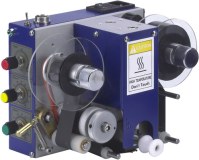Having acne often gets in the way during the big days of your life—whether it's your most-awaited job interview or your first date with someone you like. Aside from making you feel insecure, acne can also hurt and, in the worst cases, leave stubborn marks and redness. Fortunately, you don't have to live with unsightly acne scars. There are already treatments nowadays that can eliminate them, leaving your face pimple-free and flawless. One of these safe and effective procedures is the CO2 factional laser machine. It involves the removal of the outer layers of the skin through laser which reveals the fresh and glowing skin underneath. Want to learn more about how it can solve your skin problems? To get you started, here's everything you need to know about Fractional CO2 Laser skin tightening from the procedure to the benefits, and even after-care treatment.
Fractional CO2 laser resurfacing is a type of skin treatment used by dermatologists or physicians to reduce the appearance of acne scars, deep wrinkles, and other skin irregularities. It is a non-invasive procedure that uses laser, specially made of carbon dioxide, to remove the outer layers of damaged skin.
What Does Fractional CO2 Laser Treat?
Fractional CO2 laser is commonly used to treat acne scars. However, it can also tend to a wide range of skin problems such as:
*Age spots
*Crow's feet
*Enlarged oil glands (especially around the nose)
*Fine lines and wrinkles
*Hyperpigmentation
*Sagging skin
*Sun damage
*Uneven skin tone
*Warts
The procedure is often done to the face, but the neck, hands, and arms are just a few of the areas that the laser could treat.
Who Should Get Fractional CO2 Laser?
Fractional CO2 laser is ideal for people who like to minimize the appearance of acne scarring, fine lines, pigmentation, and other skin conditions listed above. Dermatologists also recommend undergoing the procedure if you suffer from a non-responsive skin after a bad facelift.
Individuals concerned about superficial as well as deep lines and wrinkles “laugh lines”, “lip lines”, “crow's feet”, upper and lower eyelid skin, acne and other scars are good candidate for treatment. Fractional CO2 laser can soften, smooth and tighten the skin. Brown spots or “sun spots” or uneven texture caused by sun or environmental damage can be softened or sometimes eliminated. The fractional CO2 laser stimulates the production of new collagen resulting in tighter and younger looking skin. Fractional CO2 lasers do not treat skin redness or broken capillaries, so their appearance will not change. Ask your esthetic staff about other laser treatments for these skin conditions.
Who Should Avoid Fractional CO2 Laser?
Unfortunately, the fractional CO2 laser is not for everyone. Individuals with extensive breakouts, open wounds, or any infections on the face are advised to stay away from this skin procedure. People who take oral isotretinoin should also avoid the procedure as it poses a risk for health and safety. If you have chronic medical conditions (such as diabetes), you should also take extra caution and make it a point to consult a doctor or dermatologist first. Having said all of these things, it's vital that you schedule a consultation with a dermatologist in order for them to assess whether you are qualified for the procedure or not.
Patients with autoimmune diseases like Lupus or Scleroderma are not candidates for Fractional CO2 Laser treatments as these conditions interfere with the skin's ability to heal. Patients taking daily blood thinners prescribed by their doctors for medical conditions may not be candidates for treatment. Accutane users must wait one year before the end of taking medication before treating with the CO2 Fractional Laser. People with darker skin tones are not ideal candidates for this treatment due to the risk of pigment changes. Individuals with tanned skin, whether from natural sun light, tanning beds, or spray lotions must wait until the tan has faded or worn off before undergoing the laser treatment. If you are not a candidate for Fractional CO2 Laser treatment, your esthetic team can discuss alternative treatments.
How Is The Fractional CO2 Laser Procedure Done?
The fractional CO2 laser is often done by applying a local anesthetic cream to the problem area 30 to 45 minutes prior. The procedure itself lasts for only 15 to 20 minutes. It uses short-pulsed light energy (known as ultra pulse) that is continuously blasted through a scanning pattern in order to remove thin, outer layers of damaged skin. Once the dead skin cells are eliminated, the procedure activates the production of multiple microthermal zones that reaches deep into the skin. Through this, it can stimulate your body's natural healing process and boost collagen production. This ultimately replaces the old, damaged cells with new, healthy skin.
What Do You Need To Do Before Fractional CO2 Laser?
Before undergoing a fractional CO2 laser procedure, it's recommended to follow these pre-treatment rules;
*Don't use products containing retinoids as it can affect the end results.
*Avoid excessive sun exposure 2 weeks prior to the laser treatment.
*Stop taking medications such as ibuprofen, aspirin, and even vitamin E as this can lead to prolonged clotting.
*Consult your dermatologist to find out if you're a good candidate for the fractional CO2 laser treatment.
Is There Any Downtime?
Thanks to the fractional technology used during the procedure, healthy tissues underneath the skin can still be found just in between the microthermal zones where heat was applied. These healthy tissues are able to provide the cells and proteins required to quickly heal the skin. As a result, patients only have to undergo shorter recovery periods—lasting for 5 to 7 days.
Most patients would find the pain minimal and often describe the sensation similar to prickling. However, since the procedure involves applying anesthesia to the area, your face would be numb which ensures a painless treatment.
Are There Any Side Effects?
Since the fractional CO2 laser procedure introduces heat (through the laser) into the skin, patients may find some redness or swelling in the treated area. Some may even experience discomfort and scabs. In rare and worst cases, you may see the following complications after the skin treatment:
*Prolonged erythema - Redness is expected after the fractional CO2 laser procedure but it usually heals within three to four days. If redness hasn't ceased after a month, you might be suffering from prolonged erythema.
*Hyperpigmentation - Post-inflammatory hyperpigmentation (PIH) is most commonly experienced by patients with darker skin. It usually occurs after an injury or inflammation of the skin.
*Infections - Getting bacterial infections is rare with only a 0.1% chance in all treated cases. However, it's still best to properly identify them and their treatments to avoid further complications.
Fortunately, the risk of getting these side effects could be minimized and completely eliminated by following some post-care tips that dermatologists recommend.
What Should You Do After Fractional CO2 Laser Procedure?
After the fractional CO2 laser procedure, you should apply sunscreen to protect your skin from the sun's harmful rays. Do make sure to also use a gentle cleanser and moisturizer twice a day and avoid any harsh products. It's best to limit the use of makeup products as well because they can irritate the skin even more.
To ease the swelling around your face, you can try putting an ice pack or compress to the treated area in the first 24 to 48 hours after the fractional CO2 laser treatment. Apply ointment as necessary in order to prevent scabs from forming. Lastly, you may need to adjust your daily activities and avoid situations, such as swimming and workouts, where you can get an infection.
Do You Need To Undergo Multiple Fractional CO2 Laser Treatments?
The results of the skin treatment will depend on the problem you are targeting. For instance, if you'd like to get rid of hyperpigmentation, you can instantly see results in only one session. However, when eliminating acne scars and fine lines, it may take a while for the results to show up. Again, depending on the severity of your skin condition, you may need to undergo about one to three sessions. These treatments can be done at four to six-weekly intervals.
Where Can You Get Fractional CO2 Laser?
You can get the fractional CO2 laser treatment at various skin clinics. However, given the delicate nature of the procedure, it's best to work with board-certified dermatologists that can ensure the process is safe and effective. The fractional CO2 laser is a non-surgical treatment that targets your acne scars, fine lines, and other skin concerns with minimal downtime. It involves eliminating the outer layer of damaged skin which stimulates collagen production for firmer, healthy, and younger-looking skin. After the very short (15-20 minute) procedure, you can instantly go back to your daily activities and face the day with newfound confidence!
What can you expect after fractional CO2 laser treatments and are there any restrictions?
All patients experience redness initially. Immediately after the CO2 laser treatment, the skin is usually red and swollen. Redness and swelling maybe milder with light treatments and last just a few days. Redness will be more intense after mid to deep treatments and last 1 to 2 weeks after your treatment. Subsequently there will be “pinkness” to the skin that may last 2 to 12 weeks depending on your skin characteristics and the “depth” of the treatment. Cover up make-up can be used to hide the pink color.
All patients experience some amount of swelling post procedure. Swelling is controlled with ice application and keeping the head elevated on pillows. Swelling usually peaks at 2 to 3 days after treatment and then slowly resolves. Deep treatments may cause pinpoint bleeding or oozing and possibly crusting on the skin. You will have specific instructions for care of this situation which usually resolves in 2 to 3 days. Skin peeling is expected after fractional CO2 laser treatments. This is the old superficial layer of skin peeling off to reveal the fresh new skin underneath. Peeling usually starts about 3 days post treatment and is gone by 7 to 10 days. In general, doctor will suggest you plan on 2 to 5 days at home for initial recovery, longer for deep treatments. Consider not planning major social events for at least 2 weeks after treatment.
Sweat can irritate the skin and worsen redness and swelling, so major aerobic exercise should be avoided for 24 to 48 hours post treatment. After that you may exercise as tolerated and to your comfort level. Sun exposure can cause unwanted pigmentation changes and uneven skin tone. You must avoid direct sunlight and be religious about use of sunscreen during the healing and rejuvenation process of the skin. UVA/UVB SPF 30 or above sunscreen must be applied prior to make-up for at least 6 months post treatment.
Location : HENAN NEW-TECH MARKET.NO 199, YANG JIN ROAD, JINSHUI DISTRICT ZHENGZHOU, CHINA., 450003 Zhengzhou,
Contact : Best Bvlaser, 0086 19503862093







